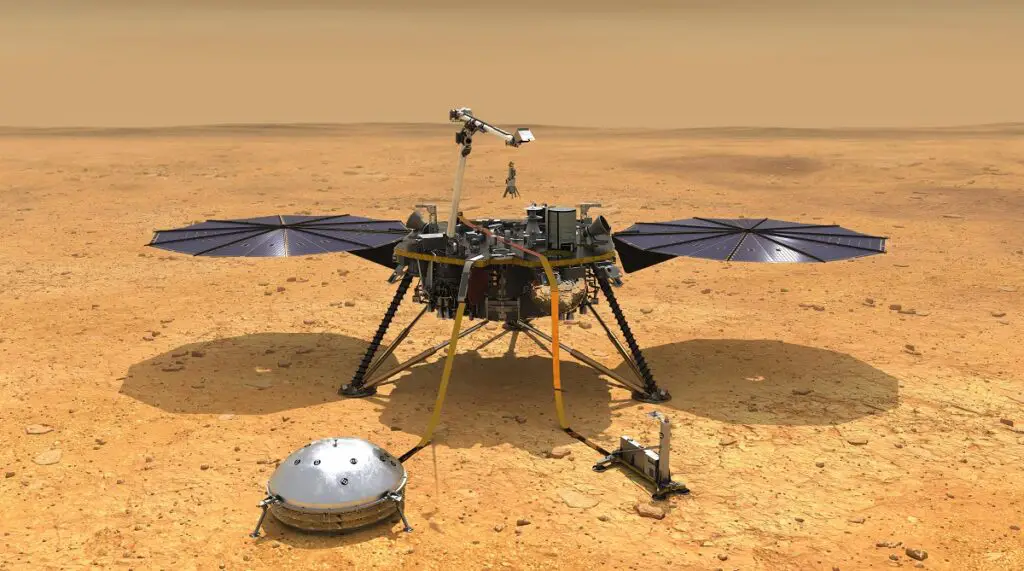NASA’s Perseverance Mars Rover just completed its 1,000 Mars days on the red planet. Unlike Earth, Mars Days are slightly longer. One Sol is about 24 hours and 37 minutes. This implies that the Perseverance rover has been exploring the hostile environment of Mars for 1000 Mays days or sols. Perseverance team and scientists across the globe celebrated this milestone.
“Sol in, sol out! I completed 1,000 Martian days … and my work is far from done,” Perseverance team members wrote on Tuesday (Dec. 12) via the mission’s official account on X (formerly known as Twitter).
Based on this post, the Perseverance team revealed that the car-sized rover completed its 1000 sols on Tuesday.
NASA’s Perseverance Mars rover and its companion, the Ingenuity helicopter safely landed on Mars’ Jezero Crater on Feb. 18, 2021. Since its arrival, the powerful rover has been searching for signs of ancient Mars life on the terrain of the 28-mile-wide (45-kilometer) Jezero. The rover has also collected samples that will soon be retrieved from the Martian surface.
“We picked Jezero Crater as a landing site because orbital imagery showed a delta — clear evidence that a large lake once filled the crater,” Perseverance Project Scientist Ken Farley, of the California Institute of Technology in Pasadena, said in a statement on Tuesday.
“A lake is a potentially habitable environment, and delta rocks are a great environment for entombing signs of ancient life as fossils in the geologic record,” Farley added. “After thorough exploration, we’ve pieced together the crater’s geologic history, charting its lake and river phase from beginning to end.”
Why NASA is using The Perseverance Mars Rover to explore the Jezero Crater
Jezero Crater is one of the most precious regions on the Martian surface. Scientists revealed that its history could be traced back to about four billion years ago when an asteroid impact created the crater. Since the region contains traces of ancient Mars dried-up river, NASA found it worthy to search for evidence of past life on Jezero.
While exploring this region, Perseverance Mars rover discovered that its floor is made up of Volcanic rock. The mission team members suggested that the Jezero crater also accommodates sandstones and mudstones atop the basal layer revealing that a river started flowing into the region and depositing sediments within the region millions of years after the formation of the crater.
The river system later formed a large lake. Scientists estimated this lake to be as wide as 22 miles (35 kilometers). They also suggested that the lake has a maximum depth of about 100 feet (30 meters). The mission scientists suggested that the delta comes with boulders which started its formation outside Jezero. Powerful torrents carried these boulders into the Crater.
“We were able to see a broad outline of these chapters in Jezero’s history in orbital images, but it required getting up close with Perseverance to really understand the timeline in detail,” team member Libby Ives, a postdoctoral fellow at NASA’s Jet Propulsion Laboratory in Southern California, which manages Perseverance’s mission, said in the same statement.
The Accomplishments of Perseverance So Far
NASA used its car-sized rover to make several scientific discoveries. The Perseverance Mars rover even obtained samples. These samples will arrive on Earth via a joint effort of NASA-European Space Agency campaign in the 2030s. The mission team members revealed in Tuesday’s statement that the rover has collected up to 23 samples.
“One sample called ‘Lefroy Bay’ contains a large quantity of fine-grained silica, a material known to preserve ancient fossils on Earth,” NASA officials wrote in Tuesday’s statement. “Another, ‘Otis Peak,’ holds a significant amount of phosphate, which is often associated with life as we know it. Both of these samples are also rich in carbonate, which can preserve a record of the environmental conditions from when the rock was formed.”
As NASA’s Perseverance rover is celebrating its 1000 Mars days, the Ingenuity is also celebrating its 1,000 sols. NASA built the Ingenuity helicopter as a technology demonstrator to reveal the aerial view of Mars. Despite Mars’ thin atmosphere, NASA scientists were able to fly Ingenuity on the red planet.
The first Martian helicopter has successfully completed 62 flights on Mars. Since NASA extended its mission, the rotorcraft remains active on the red planet today.




